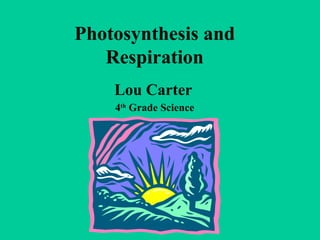Denunciar
Compartilhar

Recomendados
Recomendados
Mais conteúdo relacionado
Mais procurados
Mais procurados (19)
Destaque
Destaque (20)
Lab 4 pigmentos_vegetales_y_la_fotosintesis_by_fra

Lab 4 pigmentos_vegetales_y_la_fotosintesis_by_fra
Practica 2 extraccion e identificacion de pigmentos vegetales

Practica 2 extraccion e identificacion de pigmentos vegetales
6 isolation of plant pigments using cc and tlc 5_dec2012

6 isolation of plant pigments using cc and tlc 5_dec2012
Práctica 2. separación de pigmentos vegetales mediante cromatografía en papel

Práctica 2. separación de pigmentos vegetales mediante cromatografía en papel
Separación de pigmentos vegetales mediante cromatografía en papel

Separación de pigmentos vegetales mediante cromatografía en papel
clorofilas, carotenos, xantofilas, separación de pigmentos

clorofilas, carotenos, xantofilas, separación de pigmentos
Semelhante a Fotosintesis
Semelhante a Fotosintesis (20)
Mais de franmuje
Mais de franmuje (20)
Fotosintesis
- 1. Photosynthesis and Respiration Lou Carter 4 th Grade Science
- 3. It’s question time! What is the process by which plants make food? * Photosynthesis Photosynthesis is the process by which plants make food. A green plant makes food using light energy. Green plants get light energy from the sun.
- 4. What part of the plant produces food? Here comes a hint! In most plants the leaves are the special parts where the most food is made. Leaves contain a chemical called chlorophyll. Chlorophyll is the green matter in plants that traps light energy to produce food.
- 5. Plants use water and carbon dioxide to make food. Water is taken from the soil by the roots and travels up the stems to the leaves. Carbon dioxide is taken from the air. Air enters the plant through small openings (stomata) in leaves.
- 6. STOMATA Tiny openings on the underside of the leaf. Stomata is similar to a human nose. Stomata breathes in carbon dioxide and breathes out oxygen. The human nose breathes in oxygen and breathes out carbon dioxide.
- 7. Plants store extra food in the forms of sugar and starch. Sugar – sweet grapes Starch – corn
- 8. Pop quiz! Why is energy needed by plants and animals? Energy is needed for growth, repair of tissues, movement, warmth, and all other body functions.
- 9. All living things need energy. Energy comes from food made by plants. Oxygen combines with food and energy is released. ALL LIVING THINGS NEED ENERGY!
- 10. PHOTOSYNTHESIS is the process by which green plants get light energy from the sun. This energy is collected in the plant leaves as chlorophyll. Chlorophyll helps the plant produce food along with water and carbon dioxide. Once again……………